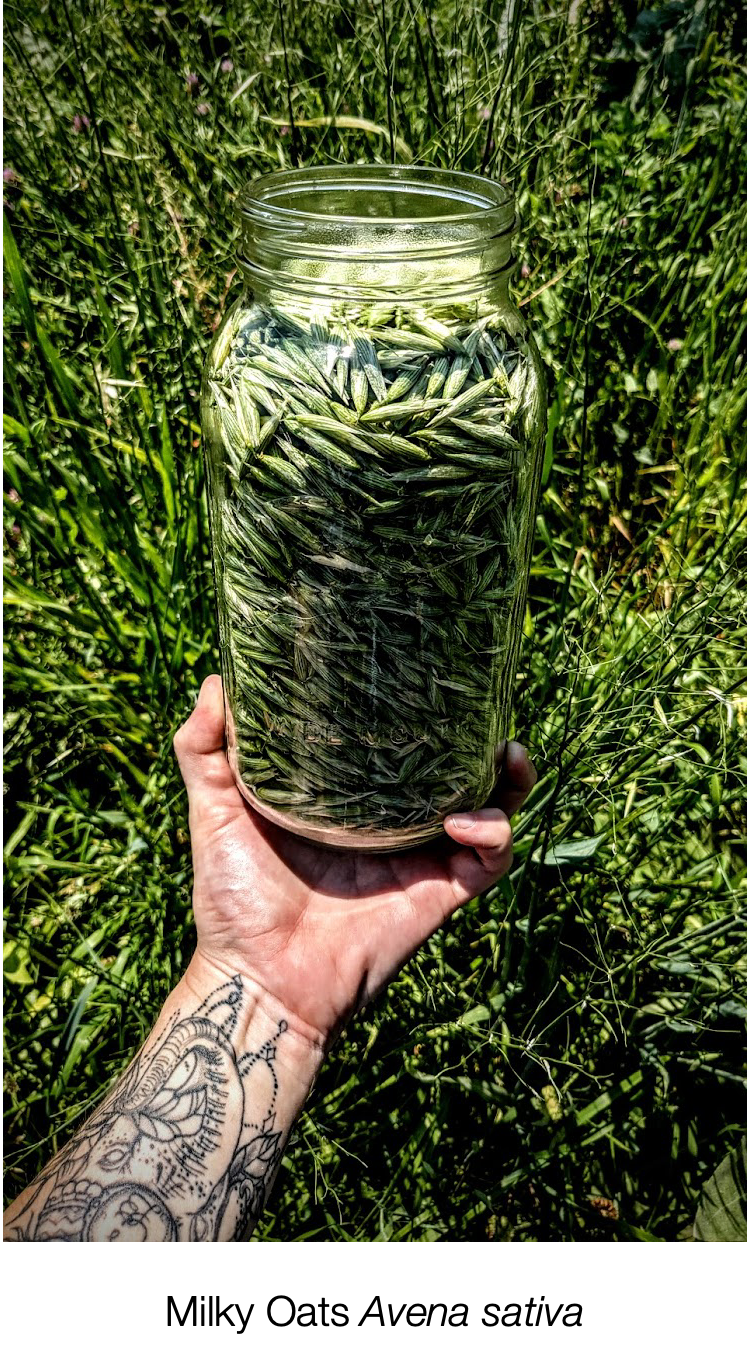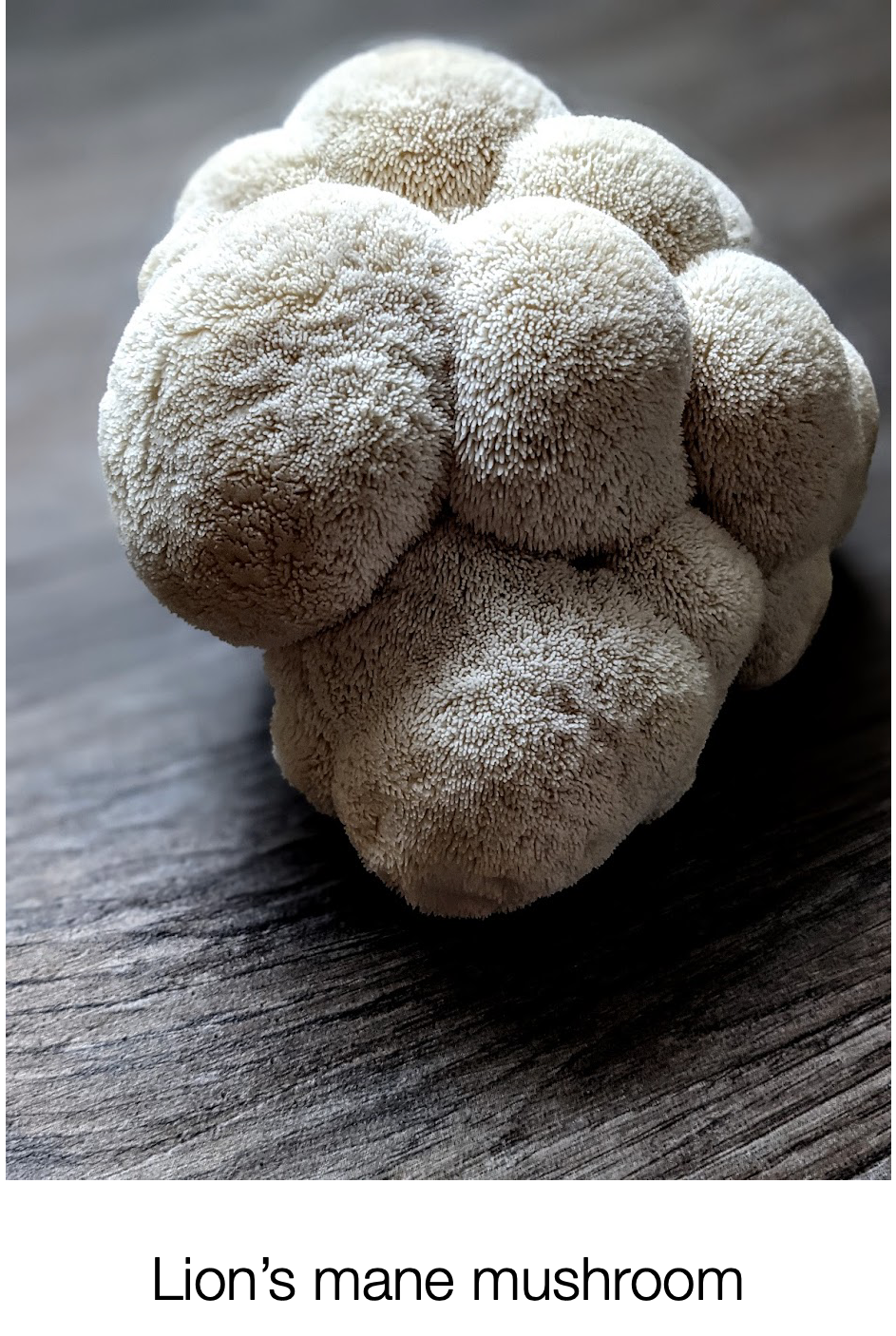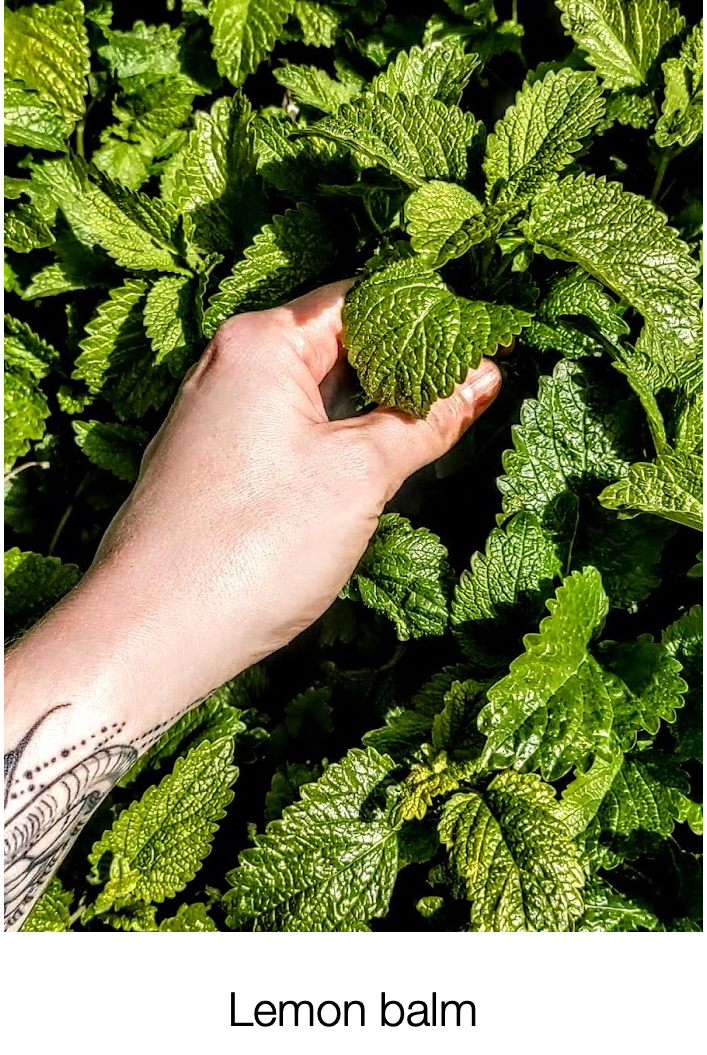Herbal Nervines: Beyond Chamomile and Lavender
- Jovie Hawthorn Browne

- Jul 10, 2023
- 9 min read
Updated: Mar 18
Supporting and Regulating the Nervous System with Nervine Herbs

What is a nervine herb?
A nervine is a plant that has an effect on the nervous system. Sounds vague, but when we think about the role that the nervous system plays in every aspect of our mental health, including our response to stress and anxiety, it makes sense why nervine herbs are some of the most commonly known and well-accepted herbs not only in traditional use and modern peer-reviewed research— but in the mainstream as well.
But just because a category of herbs is mainstream or even trending, that does not mean every herb in that category works the same or that they are all a good fit for everyone! That's one of the many beautiful things about herbs: each one has several components, actions, and mechanisms at play, making them highly customizable.
Now, not many folks will take the time to get to know the plant in order to match it appropriately, which can lead to, at best, it not working, but at worst, negative reactions.
So, instead of giving you a list of herbs to memorize that are all "good for" stress and anxiety and having you pick one to try willy-nilly— I'm going to explain how these herbs interact with the nervous system, so that you can choose the best ones for your specific circumstances.

Many nervines function directly on the central nervous system, some work directly on the autonomic nervous system, and some act on both (we'll cover the differences in these during the Seasonal Herbal Intensive).
For now, let's talk about some of the different categories of nervines...
Types of Nervine Plants
With such a broad system for nervines to function in, to more easily study them we can categorize them into the following groups:
(You’ll see a lot of overlap, and that’s because each nervine functions differently through countless different mechanisms and constituents. This makes it possible to select very specific nervines on a case-by-case basis.)
**plants we will profile as primary nervines in the Rootcraft Seasonal Herbalism Intensive
*plants we will profile in the intensive, but not as primary nervines, and
the rest are plants that are nervines but will not be profiled in the program.
Nervine Tonics

These plants have shown to help improve both the response to stress, as well as improve cognition, a term for the mental processes that take place in the brain such as thinking, attention, language, learning, memory, and perception. In cases of stress, shock, and nervous debility, nervine tonics can work over longer periods of time (weeks or months) to strengthen and restore nervous tissue directly. They can also help the body heal damaged nervous tissue caused by disease or physical injury. Some, but not all, nervine tonics have an additional relaxing effect.
Some of our most reliable nervine tonics are:
**Milky Oats Avena Sativa
**Skullcap Scutellaria lateriflora (as a tincture, not a tea)
**Tulsi Ocimum sanctum
Lions Mane mushrooms Hericium erinaceus

Nervine Relaxants
These are plants that we rely upon to calm the mind relatively quickly during times of anxiety and stress and are by far some of the best-known herbs in the mainstream because of, well, the world we live in.
Unlike tonics, which are mainly worked with over longer periods of time to restore proper nervous system function, nervine relaxants can often show more immediate results and are worked with more short-term. Some, such as skullcap and tulsi, can do both.
Nervine relaxants should always be worked with in a holistic way, addressing underlying causes of stress and anxiety as well, rather than as a band-aid-type tranquilizer to disconnect from our lives and our worries. Working with relaxing herbs over time can have an overall depleting effect on the nervous system, so they should only be worked with temporarily to get over a particularly stressful slump, while simultaneously implementing healthy coping mechanisms as well.

There are several nervine relaxants to choose from, so it’s often a good idea to match an herb's secondary actions to each situation. These combinations of actions are a beautiful way that plants can address both a symptom that has shown up as a result of anxiety, as well as the underlying anxiety itself.
For example, chamomile and lemon balm have a secondary action of supporting digestion, so if the anxiety comes along with nausea or gastrointestinal upset, one of these may be a good choice. Motherwort and Black Cohosh have effects on the uterus, so might be a better choice if the stress or tension is related to the menstrual cycle. Always check a plant's entire profile of actions and contraindications before choosing it solely on the basis that it is a nervine.

Plants that are nervine relaxants include:
**Hops Humulus lupulus
**Lavender Lavandula spp.
**Passionflower Passiflora incarnata
**Lemon Balm Melissa officinalis
**Motherwort Leonurus cardiaca
**Chamomile Matricaria recutita
**Skullcap Scutellaria lateriflora
**Valerian Valeriana officinalis
**Crampbark Viburnum opulus
**Tulsi Ocimum tenuiflorum
*Black cohosh Cimicifuga racemosa
*Klamath weed Hypericum perforatum
Mimosa Albizia julibrissin
Lobelia Lobelia inflata
Kava Lactuca virosa
California poppy Eschscholzia californica
Wild lettuce Lactuca virosa
Vervain Verbena officinalis

Hypnotics
Aka sedatives. These are nervines that can specifically help to induce a deep and healing state of sleep. This effect can be caused by mild muscle-relaxing properties, volatile oils that ease psychological tension, or strong alkaloids that work directly on the nervous system to induce sleep. Opioids, some of the most powerfully sedative, painkilling, and addictive drugs that have been made, were originally plant-derived. While not as dangerously potent, the following hypnotic plants also have the benefit of not being habit forming:
Hypnotic plants that can support sleep include:
**Hops Humulus lupulus

**Chamomile Matricaria recutita
**Passionflower Passiflora incarnata
**Valerian Valeriana officinalis
**Skullcap Scutellaria lateriflora (as a tea, not a tincture)
Wild lettuce Lactuca virosa
California poppy Eschscholzia californica
Antispasmodics
These are nervines that prevent or ease spasms or cramps in the muscles, easing physical tension and, as nervines, psychological tension as well.
Some plants have general antispasmodic actions, and others work specifically on certain organs or systems. In general antispasmodics work on the autonomic nervous system, which is responsible for controlling unconscious bodily functions (such as breathing, the heartbeat, and digestion). Not all of them necessarily effect the central nervous system (the brain and spinal cord) though. So some antispasmodic plants, but not all, have sedative effects.

Antispasmodic herbs include:
*Black cohosh Cimicifuga racemosa
**Hops Humulus lupulus
*Hyssop Hyssopus officinalis
**Lavender Lavandula spp.
**Passionflower Passiflora incarnata
**Lemon Balm Melissa officinalis
*Motherwort Leonurus cardiaca
*Lobelia Lobelia inflata
*Chamomile Matricaria recutita
**Skullcap Scutellaria lateriflora
**Valerian Valeriana officinalis
**Crampbark Viburnum opulus
There is also an extensive list of antispasmodics that are not considered nervines. These relieve muscle spasms without having any effect on psychological stress or tension. These are antispasmodics that are mostly specific to the respiratory, digestive, and urinary tracts. Most cardiovascular, musculoskeletal, and several digestive antispasmodics are also nervines.
Neurogenics

Some nervines have shown to increase NGF (Nerve Growth Factor) which is involved in the regulation of growth, maintenance, proliferation, and survival of nerves. These are called neurogenic or neuritogenic.
Lions Mane mushrooms Hericium erinaceus
*Rosemary Rosmarinus officinalis
Cannabis sativa
Ginseng Panax ginseng
Hosetail Equisetum giganteum
Rue Ruta gravolens
Phytoestrogen rich legumes: Alfalfa Medicago sativa, Red clover Trifolium pratense, Soy
Several culinary spices that are still being investigated
Nootropics

Many nervines are also considered nootropic, meaning they have been shown to improve memory or cognition.
*Rosemary Rosmarinus officinalis
**Lemon Balm Melissa officinalis
Lion’s Mane mushrooms Hericium erinaceus
**Milky Oats Avena Sativa
Gingko Gingko biloba
**Tulsi Ocimum tenuiflorum
Nervine Simulants
The term stimulant can be looked at in a couple of different ways. Many of us think of stimulants as things that give us energy or speed up the body’s activity. But stimulation can also mean triggering organs or systems to perform their functions or begin their processes.
We won’t be detailing “energizing” nervous system stimulants in this course, such as those from alkaloids like caffeine found in coffee, tea, and chocolate. In general, our lives (and the world these days) are more than stimulating. Most of us aren’t actually seeking stimulation, we’re seeking to not be tired. Relying on nervine stimulants to trick our bodies into feeling awake leaves us with side effects of feeling jittery, anxious, and tense.
A different option is to work with plants that simulate the body’s vitality. These have a deeper, longer-lasting, but more subtle effect than more traditional stimulants.
Rosemary Rosmarinus officinalis and Peppermint Mentha piperita have these qualities.
There are a couple of things that nervines don’t do:
Nervines don’t eliminate the stressors from your life.
This may sound obvious, but you’d be surprised at some peoples’ reactions to this news. If your boss is causing your anxiety, your baby is keeping you awake, or capitalism is burning you out: nervines won’t change that. Your boss will still be a jerk, your baby will still cry, and capitalism will still be burying the working class. You will still be exposed to stress after you start taking nervines.
What nervine tonics can do, though, is create a sort of buffer in our responses to these stressors. Whereas one tense encounter may have typically triggered full-blown panic or spiraling thoughts before, hopefully, with the support of nervine tonics, that threshold for panic can move a bit higher so that we’re not constantly on edge, waiting for one wrong move to set us off. We will still be subject to the things in life that are stressful, there’s no escaping that, but we’re hoping to stave off the physical responses and subsequent chronic illnesses induced by it.
Nervines don’t give us a green light
to continue patterns, habits, or lifestyles that are overly stressful. The goal is to remove as many of these stressors as possible, rather than mask them with relaxing or sedative herbs.
My top 3 recommendations to incorporate with nervine herbs are to work on:
Setting boundaries and saying “no” This is by far the most accessible. It costs no money and takes no time, it's just also the one that effects others the most, and that can be intimidating. Just know that your needs for time and space are just as important as theirs.
Working with a therapist This can be difficult to access in a country like the US where access to affordable healthcare doesn't exist for everyone. If your employer offers an EAP (employee assistance program) take advantage of that. Those seeking free or low-cost counseling often think their only options are counselors in private practice, but publicly-funded providers in your community may also offer counseling services. Resources like Open Counseling can help you find mental health services near you While state-based programs are not for everyone, they’re often a great place to start for people who face geographic or financial barriers to therapy. Intake specialists at community mental health programs can help people learn whether they qualify for state-funded services and can refer people who don’t qualify to other low-cost programs that may be able to meet their needs.
Making time for things that bring you joy. This holistic mind-body-spirit approach will triple the potency of the herbs, in a matter of speaking. This can be the most challenging, not because of traditional barriers to access such as cost or location, but because of the time restrictions that capitalism imposes on us that prevent us from spending time finding joy. Going for a hike, taking yourself to the movies, or cooking your favorite meal may not cost as much as, say, a spa day, but when we have to work as many hours as we do just to have a place to live, then also take care of our homes, our loved ones, and still answer emails after all that? Taking any amount of time for ourselves seems highly unaffordable. Time is money, as they say. I challenge you to reframe this expectation. I'm not saying quit your job and move into the woods (as much as many of us would like to), but rest should not be a privilege. This brings us back to #1: setting boundaries and saying no. Get to know your mental health limits. You don't have to push harder or achieve more just for the sake of it. When you have a choice between taking on more or taking the rest: it's okay to choose rest. That doesn't make you lazy. Laziness is a social construct used to shame us into working harder, and for who? We've been duped into believing the "sense of pride" we receive from a hard day's work is what it's really all about. Is that sense of pride valid? Of course. Being proud of what we've achieved for ourselves and provided for our loved ones is natural. We have to make sure we don't let that get taken advantage of by employers, though. They're the ones who really stand to benefit from exploiting this pride by turning it into guilt and shame in order to increase their own bottom line. With no additional effort on their part! When we push harder, the capitalists win.
Ok, ok, end of anti-capitalist rant. My point is, you're not lazy. There's no such thing as lazy. Is a cheetah lazy for basking in the sun when it isn't hunting? No, it's simply existing. Be the cheetah.
Simply exist. And you can incorporate nervine tonics to restore and maintain nervous system health, adding in other nervines as needed on a short-term basis.
For in-depth profiles on the plants in this post, including:
how to grow and harvest them,
how each one is best extracted into remedies,
how each plant is used,
history and folklore behind them, as well as
safety and contraindications for each plant...
Check out my herbal education programs:
and
We do a deep dive into a dozen other categories of Herbal Actions like Nervines so that you can move beyond surface-level herbal knowledge and into finding your confidence in working with herbs.
Let's put those screenshots you've saved on what herbs are "good for" to rest and begin to embody herbal knowledge into practice!
-Jovie



Comments